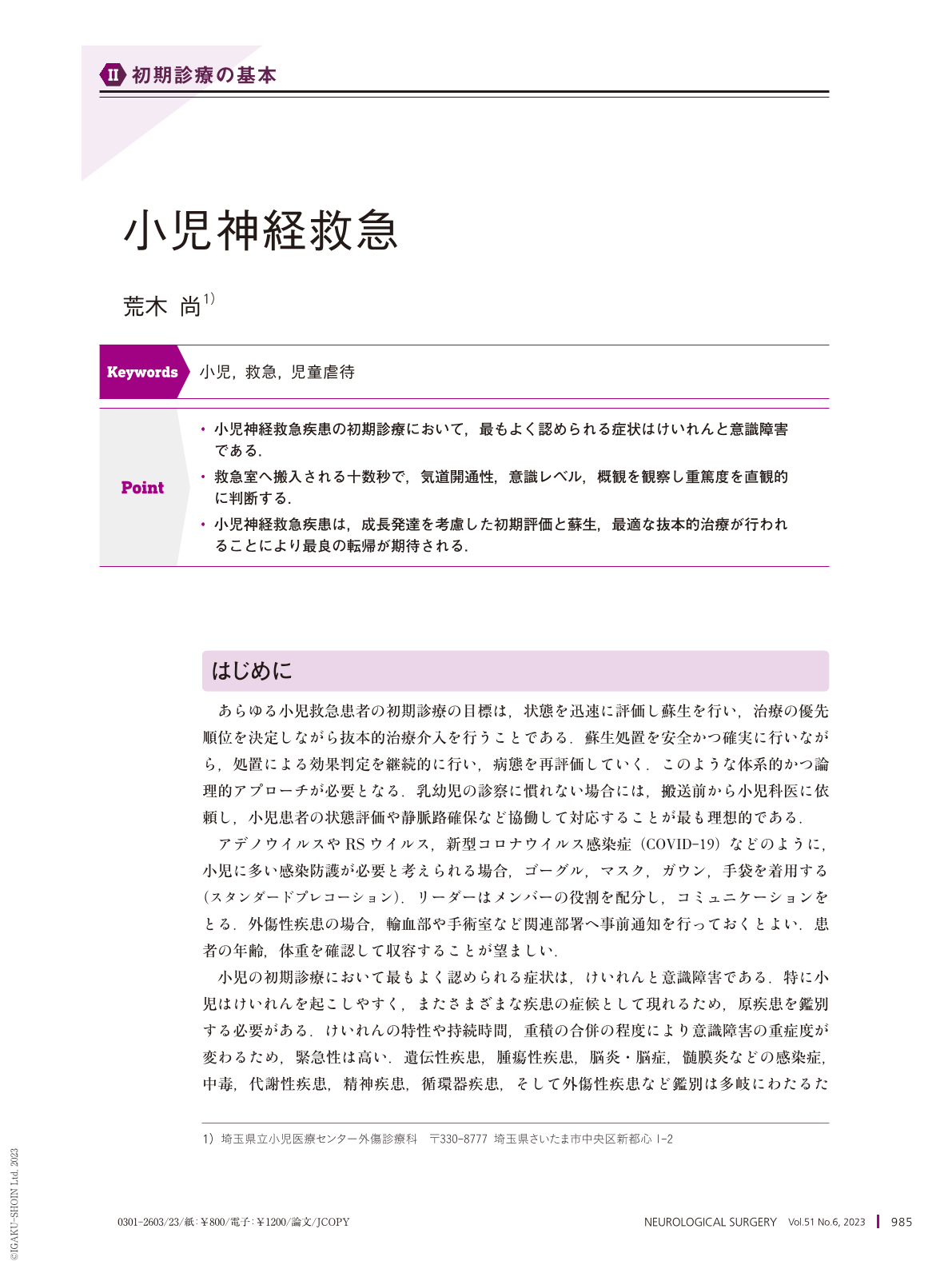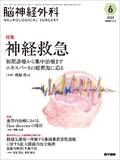Japanese
English
- 有料閲覧
- Abstract 文献概要
- 1ページ目 Look Inside
- 参考文献 Reference
Point
・小児神経救急疾患の初期診療において,最もよく認められる症状はけいれんと意識障害である.
・救急室へ搬入される十数秒で,気道開通性,意識レベル,概観を観察し重篤度を直観的に判断する.
・小児神経救急疾患は,成長発達を考慮した初期評価と蘇生,最適な抜本的治療が行われることにより最良の転帰が期待される.
The goal of initial management of any pediatric emergency patient is to rapidly assess and resuscitate the condition and provide radical therapeutic intervention while determining treatment priorities. While resuscitation is performed safely and reliably, the patient's condition should be reevaluated on an ongoing basis to determine the efficacy of the treatment. This systematic and logical approach is necessary. If the physician is unfamiliar with the examination of infants, it is most ideal to request pediatrician prior to transport, and to collaborate in the evaluation of the pediatric patient's condition and the securing of intravenous routes. In case of traumatic patient, it is advisable to notify the relevant departments in advance, such as the transfusion department and operating room. The patient's age and weight should be confirmed and accommodated. The most commonly observed symptoms in the initial treatment of children are seizures and disturbance of consciousness. Since children are particularly prone to seizures and since they can appear as a symptom of various diseases, it is necessary to differentiate the primary disease. The severity of the disturbance of consciousness depends on the types and duration of the seizures and the degree of status epilepticus making them highly urgent. Collaborate with the pediatrician because of the wide variety of differential diseases. The response to seizures and recognition of child abuse will be summarized at the end of this section.

Copyright © 2023, Igaku-Shoin Ltd. All rights reserved.


